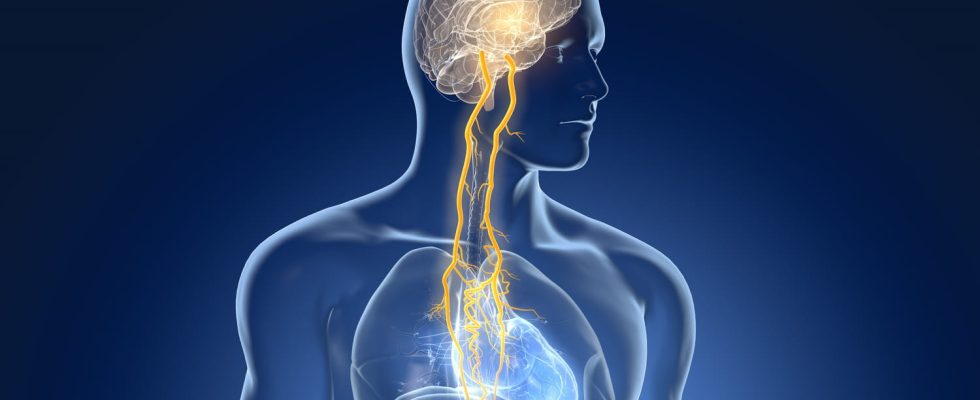Three symptoms are used to make the diagnosis of Parkinson’s disease. We speak of “parkinsonian triad” to qualify them. Others may occur at a more advanced stage.
On the occasion of the World Day dedicated to Parkinson’s disease on April 11, 2023we met the Dr Stéphanie Cantiniaux, neurologist. Parkinson’s disease and related diseases currently affect more than 270,000 people in France. Associated with a destruction of dopamine neurons (those who control movements in particular), it is responsible for many symptoms, motor and non-motor. There are “precursor” signs long before the diagnosis is made but rarely noticed by the patient and others who characterize the entry into the disease. Three specifically. Which ? What are the symptoms atypical of Parkinson’s disease ? At the stadium advance ? First ? Are they different by age? What effects on the brain ?
What are the first 3 symptoms of Parkinson’s disease?
Three characteristic symptoms of Parkinson’s disease are used to make the diagnosis. We speak, to qualify them, of “parkinsonian triad :
- tremor at rest
- slowness of gestures and movements (kinesis)
- limb stiffness/stiffness (extrapyramidal syndrome)
“Patients do not necessarily present the 3 signs at the same time, some will never even tremble. In general, they present at least 2. The most characteristic and bothersome sign being the slowness of the alternate gesturesnotes Dr. Cantiniaux. Symptoms of the Parkinsonian triad can touch only one side of the body. Apart from these signs, patients encounter digestive problems such as constipation, nausea or the feeling of being smeared. “Other symptoms may also appear, even if they are more atypical, such as the dystonia of a member or of the face with for example eye apraxia (difficulty opening the eyelids)continues the neurologist. There are also significant blood pressure fluctuations which can cause a autonomic dystonia (disorders of stomach emptying).”
What are the early symptoms of Parkinson’s disease?
Symptoms precursors may be present at the very beginning of Parkinson’s disease. Uncharacteristic, they generally do not alert of the future diagnosis but are reported by the patients afterwards. It is :
- certain smell disorders (anosmia or ageusia)
- certain sleep disorders (restless sleep, animated dreams, cries and gestures, violent dreams)
Patients may also report a tirednessa depressionconcentration problems.
What are the symptoms in the advanced stage of the disease?
“At an advanced stage, one encounters severe cognitive impairment (notably memory) in approximately 30% of patients with delusions (parkinsonian dementia) and hallucinations favored by drugs” responds our interlocutor.
Can Parkinson’s disease be asymptomatic?
“Parkinson’s disease can be minimally symptomatic at first but as soon as it evolves, the patient develops the symptoms associates“underlines our interlocutor.
The disease progresses to 3 stages:
► First phase or “honeymoon”: this is the stage where Once the diagnosis is established, treatment is prescribed at the dose that allows the patient to be asymptomatic or almost (very slight signs because well controlled). The patient lives normally. This phase lasts from 18 months to 6 years old.
► Second phase: this is the stage of motor and non-motor fluctuations that is to say that the symptoms of the triad return and lead the neurologist to increase the treatment and split it up during the day. Symptoms still respond to treatment but will be less well balanced, they will be fluctuating during the day. This stage can last for 10, 15, 20 years. The more time passes, the more the symptoms worsen and new ones appear (walking disorders, falls, slurred speech and concentration).
► Third stage: this is the most disabling stage of the disease, symptoms no longer respond to treatment and the patient develop axio signs with severe walking, speaking, swallowing, memory disorders.
What are the psychological symptoms of Parkinson’s disease?
Patients with Parkinson’s disease are dopamine deficient, the hormone that controls body movements and contributes to a good mental state. “This is why as the disease progresses, patients will be more or less deeply depressed and may exhibit behavioral changes. We also note apathy, lack of interest in what is happening around and loss of motivation“ remarks our expert.
What is the pain caused by Parkinson’s disease?
“The main pains are those say neuropathic related to parkinsonian syndrome“says Dr. Cantiniaux. Neuropathic pain concerns a area innervated by a nerve. The nerve trying to recover tends to become hyperexcitable resulting in pain type burning or, on the contrary, painful cold sensations, impression of compression, sensations of electric shocks, cramps…
What are the differences in symptoms by age?
“The forms of Parkinson’s which begin later, at an advanced age, see axio signs set in earlier and cause gait disturbances more quickly. In a younger patient, the duration of evolution of the disease and signs is slower” notes the neurologist.
Are the symptoms the same in women and men?
“Yes, symptoms do not differ by gender but according to the stage of evolution, the shape or the age“replies our expert.
Thanks to Dr. Stéphanie Cantiniaux, neurologist and specialist in Parkinson’s disease.
